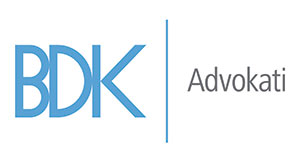Over a month has passed since DFC’s representatives visited Belgrade, and now might be a good time to highlight a couple of points related to the announced arrival of the DFC in the region
At the outset, it is worth recalling that the Development Finance Corporation (DFC) is already present in the region. This newly created U.S. development bank is the successor to OPIC, which was involved in a number of projects in Serbia and the region, primarily in issuing guarantees for sector-specific lending programs carried out by local banks.
 What’s new is that the DFC has an increased lending capacity of $60 billion (twice that of OPIC) and an expanded remit allowing it to invest in equity and project pre-development studies. However, the most important change is its mission, which is to advance U.S. foreign policy and offer “a robust alternative to state-directed investment that often leaves countries saddled with debt”. Obviously, the DFC’s mission is to counter the Belt and Road initiative and provide an alternative source for developing countries to finance infrastructure development.
What’s new is that the DFC has an increased lending capacity of $60 billion (twice that of OPIC) and an expanded remit allowing it to invest in equity and project pre-development studies. However, the most important change is its mission, which is to advance U.S. foreign policy and offer “a robust alternative to state-directed investment that often leaves countries saddled with debt”. Obviously, the DFC’s mission is to counter the Belt and Road initiative and provide an alternative source for developing countries to finance infrastructure development.
It is therefore not surprising that the flagship projects featured during meetings between the DFC and Serbian officials are two transport infrastructure projects that are of major political significance in terms of the potential to ease tensions between Serbs and Albanians and achieve long-term stability.
In order to utilize the DFC’s funds for the development of vital infrastructure projects, Serbia will have to adjust its preferred structure for the development of infrastructure, which has been to take out a sovereign loan from a development bank to finance works carried out by a contractor
The DFC approach to developing infrastructure differs from the approach of other development banks, in that DFC does not lend directly to governments but instead supports private investments in such projects through public-private partnerships and concession structures. In order to utilize the DFC’s funds in the development of vital infrastructure projects, Serbia will have to adjust its preferred structure for the development of infrastructure, which has been to take out a sovereign loan from a development bank to finance works carried out by a contractor.
A different approach could be beneficial for the national budget, which has taken a major beating from the ongoing pandemic. It is questionable whether and how many additional major infrastructure projects the treasury can sustain. PPP and concession structures are also more desirable from the perspective of competitiveness and transparency of the approval process. Their downside, however, is in the fact that they are more time consuming and, at the end of the day, may still require a certain level of governmental support if the development of the relevant infrastructure is not bankable on its own.
Serbia is currently showered with offers of significant development funds from the world’s three superstates – the U.S., EU and China. Some of these investment offers overlap. The Serbian Government has so far shown readiness to go beyond the usual and even split a project between interested parties (with the Belgrade Metro, for example). However, it will not be easy to maintain that approach, given that different actors have conflicting interests. The Serbian Government should choose the appropriate structure for specific investments carefully, and the optimal source of financing for them. Most importantly, the selection of projects should be based on a national investment strategy that’s coherent and publicly scrutinized.